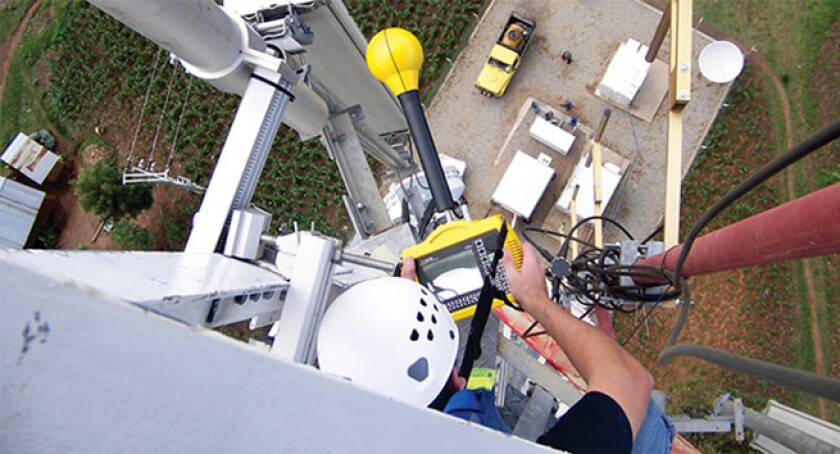EMSS Consulting has been active in the field of RF safety for more than 15 years and provide RF safety services and products. They stay up to date with international developments, but apply this particularly to the unique African environment. EMSS’ clients include tower owners, mobile operators as well as national regulators. They’ve done RF compliance assessments at thousands of cell sites across Africa, done RF measurements at more than 13,000 cell sites and trained more than 2,000 tower climbers on RF safety. RF safety products include the fieldSENSE personal RF safety monitor and the Ixus software package, used by numerous companies internationally to perform and document site specific RF assessments.
TowerXchange: Who needs to be trained in RF safety and why?
Marnus van Wyk, Managing Director, EMSS Consulting:
Any person accessing cell sites (and other broadcast sites) should be RF trained. These persons access restricted areas, where the RF exposure could be close to or exceed the relevant guidelines.
Most RF safety guidelines have two tiers, one for the “public” and a less restrictive “occupational” guideline. An understanding of exposure conditions and available safety measures is a requirement to be exposed to the “occupational” guidelines. These topics are covered in a typical RF Exposure Awareness course.
TowerXchange: What are the critical considerations around RF safety when protecting tower climbers and other authorised visitors to cell sites?
Marnus van Wyk, Managing Director, EMSS Consulting:
In addition to the RF safety training for tower climbers, there are a number of other components in a typical RF safety programme. These typically include site specific and general safety measures.
Site specific RF safety measures: An RF exclusion zone assessment is required for every site to identify possible risks and choose the most appropriate mitigation measures. Our experience here is that a lot of effort is required to assess, (possibly) fix and certify installations on buildings. The main reason here being that the general public has access to areas very close to the antennas in many cases. As an example, washing lines are sometimes tied to antennas or antenna mounting poles on building sites.
For a typical mast site the level of effort required is significantly less, since the RF exclusion zones are typically not readily accessible by the public and there will be sufficient access control (a perimeter fence) in place.
Once the assessment has been completed, remedial actions can be implemented, if required. This can include various measures such as relocation of antennas, installation of access controls such as barriers as well as installation of appropriate RF warning signage. The final step is certification of the site in terms of the relevant RF safety guidelines.
General RF safety measures:
Site access procedures: Ensure that only trained RF workers have access to cell sites and document all site visits into public and occupational exclusion zones.
Shut-down policies: Ensure the necessary agreements and procedures are in place to shut-down required transmitters for work in areas of RF overexposure.
Personal RF monitors: A device giving the user an indication of the level of RF exposure to warn of possible overexposure.
Many of the leading operators on the continent have had a form of a RF safety programme in place for many years, while other operators or tower owners have no RF safety measures in place at all. Generally the level of awareness is increasing steadily
TowerXchange: How would you describe the current levels awareness of RF safety in Africa?
Marnus van Wyk, Managing Director, EMSS Consulting:
I would say it varies significantly depending on the country, similar to other health and safety issues. Many of the leading operators on the continent have had a form of a RF safety programme in place for many years, while other operators or tower owners have no RF safety measures in place at all. Generally the level of awareness is increasing steadily.
In some agreements between tower owners and mobile network operators, the responsibility for RF safety remains a grey area. This can lead to delays in implementing the required RF safety programmes. Additionally this can also lead to delays in dealing with complaints from the public, which can harm the image of both the tower owner and mobile operator.
TowerXchange: How is compliance certified?
Marnus van Wyk, Managing Director, EMSS Consulting:
Various levels of effort can be applied here, depending on the installation type. Typically a site visit with very basic checks is sufficient for a mast site, while a detailed computer simulation is used for every building site. Measurements using a suitable spectrum analyser can also be used to prove compliance. We’ve used RF measurements in numerous instances to address the questions from the public regarding RF safety.

